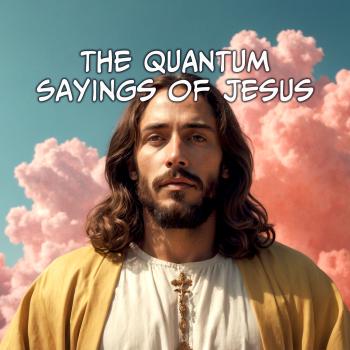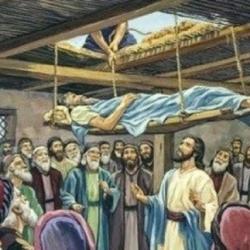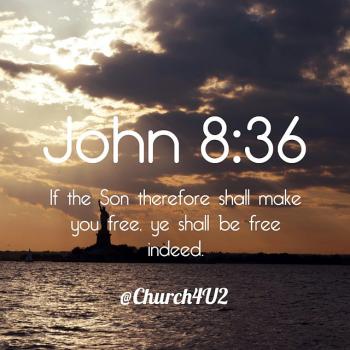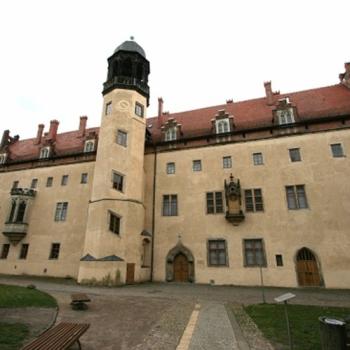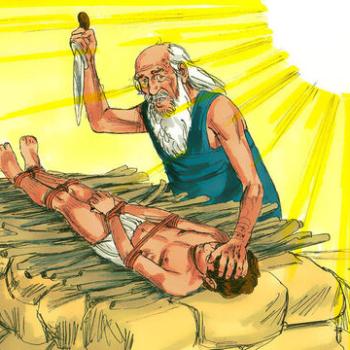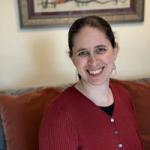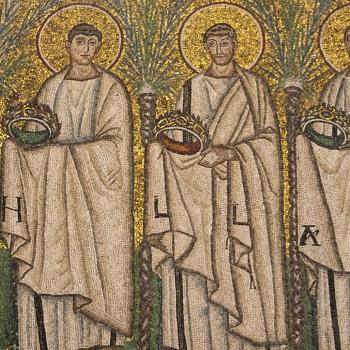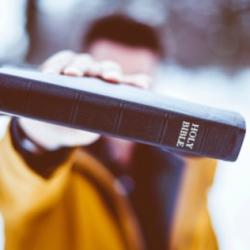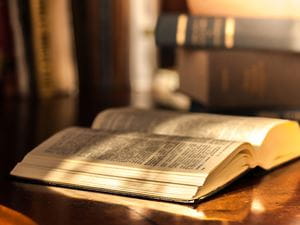
The Eastern Orthodox Church is actually a "communion" (or conglomerate) of various autocephalous and autonomous branches or denominations of the Church. "Autocephalous" is typically used to mean an Orthodox denomination that is "self-governing," whereas an "autonomous"; Orthodox Church is one that is "self-legislated" but still under the governance of one of the autocephalous Orthodox denominations.
The universally acknowledged autocephalous branches of Orthodoxy are the Patriarchates of Alexandria, Antioch, Jerusalem, Moscow, Serbia, Romania, Bulgaria, Georgia, Cyprus, Greece, Poland, Albania, and the Czech Lands/Slovakia. The universally acknowledged autonomous branches are the Orthodox Churches of Finland and the Sinai. There are other branches (such as the Orthodox Church in America and the Orthodox Church of Ukraine) that are not acknowledged by all branches of Orthodoxy as autocephalous. There are also numerous branches that are not universally acknowledged as autonomous, as well (such as the Orthodox Churches of Estonia, Japan, China, Ukraine and the Archdiocese of Ohrid—in Macedonia). There are other formerly self-governing Orthodox Churches (like Rome, Carthage, Latvia, and Lithuania) that are either no longer Orthodox or which simply no longer exist. And others still that are considered schismatic, having broken ranks with the mainstream Orthodox Church—being no longer in communion with the main Church, even though they usually maintain the doctrines and practices of the mainstream Church (such as the Macedonian Orthodox Church, the Church of Ukraine, the Ukrainian Autocephalous Orthodox Church, the Belarusian Autocephalous Orthodox Church, the Orthodox Church of France, and the Montenegrin Orthodox Church).
Each of the fourteen main denominations functions independently from each other but are united under the Istanbul-based Ecumenical Patriarchate of Constantinople—who is seen as primus inter pares or "first among equals." In other words, the Ecumenical Patriarch of the Eastern Orthodox tradition symbolizes the unity of the various denominations. Unlike the Pope (in Roman Catholicism), the Ecumenical Patriarch does not "run" the various denomination—which has their own denominational patriarch. However, the Ecumenical Patriarch does preside (as "first among equals") when the various denominations meet collegially, symbolizing the reality that each of these denominations are not only "in communion" with each other, but they are essential "one."
Size
When understood as being a singular denomination of Christianity, the Eastern Orthodox Churches constitute the second largest Christian tradition—Roman Catholicism being the largest. According to the Pew Research Center, there are approximately 260 million Orthodox Christians in the world today—though estimates vary from as low as 160 million to as high as 320 million. (While there are more people who are members of the various protestant denominations than there are Eastern Orthodox Christians, Protestantism is very fractured and cannot be considered a singular denomination—whereas the branches of Orthodoxy are really a singular Church, with a singular head—the Ecumenical Patriarch.)
Doctrines
Orthodoxy shares with other Churches many traditional Christian doctrines—through the Orthodox Church sometimes has a slightly more nuanced understanding of these doctrines. By the time of the First Council of Nicaea (AD 325), the theological rift between the East (what would become the Orthodox Church) and the West (what would become Roman Catholicism) was already quite pronounced. We will delineate some of the differences below. However, it is worth noting that the Orthodox more frequently fall closer to Catholics than protestants on most major doctrines—though certainly not all.
Origins
Much like the Roman Catholic tradition, the various branches of Eastern Orthodoxy see themselves as the original Church of the New Testament—the very Church that many hold was founded on the day or feast of Pentecost (Acts 2), when the Holy Spirit was poured out in abundance upon the followers of Christ. Whereas Roman Catholics often perceive all other Christian denominations as a "break off" of their tradition, many Eastern Orthodox Christians hold that all Christian denominations broke off of Orthodoxy—including Catholicism, which the Eastern Orthodox often claim severed itself from Orthodoxy in the "Great Schism" of the 11th century.
Councils
While Roman Catholicism accepts twenty-one ecumenical councils (from the 1st Council of Nicaea, in AD 325, down through Vatican II, in AD 1962-1965), Eastern Orthodoxy only accepts the first seven ecumenical councils (i.e., Nicaea I, Constantinople I, Ephesus I, Chalcedon, Constantinople II, Constantinople III, and Nicaea II).
Jesus Christ
Eastern Orthodoxy holds Jesus to be the central figure of Christianity and certainly the center of Eastern Orthodoxy. It is He around which all sacraments of the Church revolve, the liturgical calendar is focused, and in whom all hopes for salvation are grounded. The Christology of the Church holds that Jesus is fully human and fully divine—one Person with two natures. He was perfectly human and perfectly divine. Jesus was begotten in pre-eternity as God's Son, having no heavenly mother, and begotten in mortality, as a man without an earthly father.
Of Him, the Orthodox Church in America has said: "As the unique divine-human person, Jesus saves the world by teaching the absolute truth of God; by forgiving the evils of all men and the whole world; by suffering and dying in innocence, voluntarily and unjustly on the cross in order to be with all who suffer and die; by rising from the dead in a new and glorified form; by taking our humanity to God in order to make it divine forever...that they could, in a word, be sons of God in Him."
Salvation
In Orthodoxy, salvation is often defined in terms of "theosis" or "deification"—meaning, the ultimate goal of the Christian life is for God (through Christ) to cleanse each Christian of "hamartia" (i.e., ways in which we have "missed the mark" or the purpose of the Christian life)—thereby allowing the saved Person to share eternally in the "nature" of the Holy Trinity (though not in God's "essence" —which would be an impossibility, since we are not Gods). Thus, for the Orthodox, heaven is not simply a place that awaits the faithful. It is also the abode of those who have been deified, who have been "saved from un-holiness," and who will enjoy and participate in the everlasting "life" of the Holy Trinity.
Trinity and the Filioque
Orthodoxy believes firmly in the doctrine of the Holy Trinity. However, it rejects all modalistic interpretations of that sacred doctrine—interpretations so common in much of low-church Protestantism and among many contemporary Catholics. Rather, the Orthodox emphasize the "oneness" of the Father, Son, and Holy Spirit, while acknowledging those three divine Persons as utterly distinct—with unique roles in the Godhead. For the Orthodox, though the Father, Son and Holy Spirit constitute the Holy Trinity and one God (united in divine essence), the Son and Holy Spirit are traditionally seen as subordinate to the Father.
Orthodoxy rejects the filioque or Catholic doctrine that the Holy Spirit precedes forth from both the Father and the Son. The filioque, meaning "and from the Son," was added to the Nicene Creed (by the West) in the late 6th century, and Eastern Orthodoxy rejects that addition—not only because it changes the original text of the creed, but also because it rejects the doctrine of the subordination of the Son to the Father—a doctrinal belief which distinguishes the Orthodox from the Catholics and most protestants in their understandings of the Holy Trinity.
The Virgin Mary
Mary is considered the greatest of all of the Saints and is honored above any other Saint of the Church. Of course, both Orthodox and Catholic Christians elevate the Virgin Mary to a very high status. The Orthodox refer to her as "the Theotokos"—meaning literally "the Mother of God." However, whereas Catholics have toyed with the idea that Mary may be "co-redemptrix" with Christ, the Eastern Orthodox emphatically reject that idea. While Mary is revered in Orthodoxy, she is not on par with Jesus, nor does she receive the same worshipful adoration that she does in many Roman Catholic nations.
Additionally, whereas the Catholic Church proclaims a doctrine known as the "Immaculate Conception"—which states that Mary was herself conceived without "original sin" (thereby making it impossible for her to pass on "original sin" to Jesus)—the Orthodox reject that doctrine, and do not fully embrace the doctrine of "original sin" (in which the dogma of the Immaculate Conception is grounded); at least, the Orthodox do not accept "original sin" in its Augustinian conception (even though the Orthodox do practice infant baptism).
Like Roman Catholics, the Eastern Orthodox do typically subscribe to the perpetual virginity of Mary. The New Testament passages which speak of Jesus's "brothers" are traditionally interpreted (by the Orthodox) as Jesus's "kin" or "kinsmen"—a looser interpretation of the Greek word adelphos, entirely possible in the original Greek. Thus, the Orthodox do not believe that Mary and Joseph ever consummated their marriage and believe that Mary's extreme holiness was manifest, among other ways, through her choice to remain a perpetual virgin.
Supremacy and Infallibility
Among other things, one of the driving factors behind the "Great Schism" (AD 1054) between the Eastern and Western sides of the Church had to do with papal supremacy. Whereas the West had come to believe that the Bishop of Rome (or Pope) held authority over all other bishops of the Church (in the West and in the East), the Eastern side of the Church firmly believed that the Church should be led collegially, as a college of bishops, with no one bishop exercising more authority than the others. When the Pope sought to exercise his authority over the ecumenical patriarch (in Constantinople), the gauntlet had been thrown down, and, ultimately, this led to the two sides excommunicating each other.
Whereas the Roman Catholic Church holds that the Pope has the ability to speak infallibly on matters of dogma and morality when speaking ex-cathedra, the Eastern Orthodox tradition has consistently maintained that no man—Pope, patriarch or Person—is anything more than human and, thus, none can claim infallibility—ecclesiastically, theologically, or otherwise. In this regard, the Orthodox are much like the various protestant denominations and very different from the Catholic Church.
Clerical Celibacy
In Roman Catholicism, those who have taken holy orders (nuns, priests, bishops, popes, etc.) are required to take a vow of celibacy. (The only exception being a married and ordained priest from another Christian tradition, such as Anglicanism or Lutheranism, who then converts to Catholicism and continues to function as a priest, though now in the Catholic Church.) However, in the Eastern Orthodox tradition, while "higher clergy&" (e.g., Bishops, Archbishops, Metropolitans, Patriarchs) are expected to be celibates, "lower clergy" (specifically parish priests) are required to be married. Among other things, the Orthodox have argued that a priest over a parish will need to counsel his parishioners on issues of marriage and family life. How can he adequately do so if he has no experience in this arena himself? Thus, celibacy—while the norm among the monks and leadership of the Orthodox Church—is largely non-existent among local parish priests (with the exception of widowers). For the Orthodox, like protestants, a life of celibacy is not seen as a more holy life than is the married life, as marriage is a sacrament, and thus is, by definition, "holy&" or "sacral."
Seven sacraments
While both Roman Catholics and Eastern Orthodox Christians have seven Sacraments, those seven are not identical in the two traditions. Customarily labeled, the sacraments of these two traditions are as follows:
| Easter Orthodox Sacraments | Roman Catholic Sacraments |
| Baptism | Baptism |
| Chrismation | Confirmation |
| Holy Communion | The Eucharist |
| Holy Orders or Ordination | Penance or Reconciliation |
| Confession or Penance | Holy Unction or Anointing of the Sick |
| Anointing of the Sick or Holy Unction | Holy Matrimony |
| Holy Matrimony | Holy Orders |
Sin and Human Nature
The Orthodox acknowledge the Fall—as do most Christian denominations. However, for the Eastern Orthodox, since humans are created "in the image of God," they do not say that "human nature" is "evil." Rather, their focus instead is on the reality that humans are "attracted" to sin or are "inclined" to sin. Thus, whereas Augustine focused on the guilt humans possess because of the Fall—and in the form of "original sin" or "inherited guilt"—the Orthodox largely reject this, saying instead that our humanity makes us more susceptible to sin, but we are no less endowed with "divine nature" and the potential to experience divinization through the God who has created us "in His image."
Scripture
While the Orthodox do believe in the entire Holy Bible as canonical, as an official position, the various parts of the Bible have greater or lesser status, contingent upon the book. The four gospels have the greatest esteem out of all the Biblical books.
The Orthodox reject the protestant doctrine of sola scriptura (or "scripture alone"). "Tradition" (i.e., the content of the Seven Ecumenical Councils, the Church's official interpretations of scripture, and the Church's long-standing theological positions and practices—as manifest through "holy tradition" and the "consensus" of the Church Fathers) also carry canonical status and are interpreted by many Orthodox Christians as equally binding as that which is contained in the Holy Bible.
Icons
The Orthodox use religious icons (or art) quite heavily. While they do not perceive doing so as idolatrous, they traditionally venerate (or kiss) icons, burn incense to them, and use them in most acts of worship. For the Orthodox, icons help the worshiper to draw closer to God. They are a door to spiritual communion with the divine. Because of what they represent, they are treated with great respect and even awe—though the Orthodox are emphatic that the icons are not perceived as God, only as a representation of the divine.
In Orthodox tradition, icons are not simply "nice" depictions of divine beings or holy events. Rather, they are "necessary" or "essential" in Orthodox worship, as they "safeguard a full and proper doctrine of the incarnation." They help us to understand what Jesus was. Just as an icon is an earthly matter with a divine image, pointing our minds and hearts to God, Jesus came to earth, took upon Himself a body made of "earthly matter" (but with a "divine image" or the "express image of God"—Hebrews 1:3), thereby pointing our hearts and minds to His Father, God. Thus, icons not only open the door to heaven, but they also teach us about a crucial Orthodox doctrine—the incarnation of God's Son.
While the Orthodox will use 2-dimensional images, they traditionally avoid statuary as a part of their formal worship (in an effort to avoid breaking the commandment given in Exodus 20:4-5 about "graven images").
Progressivism and Church Evolution
One of the things that set the Orthodox Church apart from other Christian denominations is its efforts to remain as close to the New Testament Church—its doctrines, structure, and feel—as possible. In that regard, some outside of the Orthodox tradition has seen it as "anti-progressive." The Orthodox do not use such terminology in explaining their stance. However, it is true that Orthodoxy generally sees the evolution of the look, feel doctrines, and practices of many of the other Christian Churches as evidence that they have strayed from New Testament Christianity. The Orthodox, on the other hand, have sought to avoid as much of that theological "drift" as possible and, thus, when one steps into an Orthodox Church, sometimes it feels a bit as though one has stepped back in time. For practitioners of Orthodoxy, this is not only part of the beauty of their tradition but also part of what evidences that it is the "true" or most "accurate" of Christian denominations.
5/14/2024 9:13:29 PM

